
Thursday August 20, 2020 | VICTORIA, BC [Updated August 21, 2020 ~ MPB]
Editorial Analysis by Mary P Brooke, editor | Island Social Trends
Teachers want more protection, parents are stressed with uncertainty about sending their kids to school, and the Ministry of Education is doing what it feels is needed for adapting to those pressures in balance with direction and guidance from public health.
All of this is in response to the continued realities and pressures of the COVID-19 pandemic in BC. The epidemiological curve was flattened when everyone stayed home. But now that the economy is in a necessary restart, COVID case counts are up. No age group is unaffected.
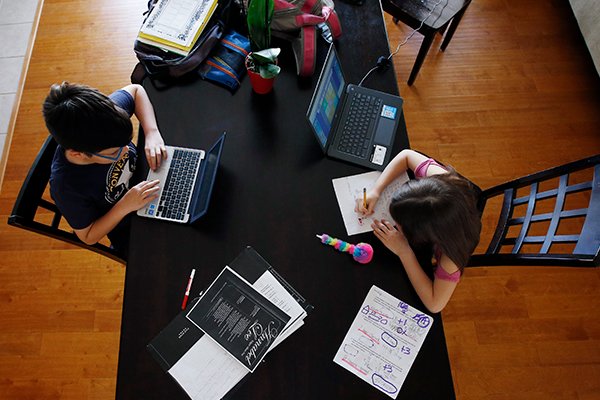
From the start of the BC Ministry of Education rollout of ‘return to school’ plans at the end of July (for the 2020-2021 academic year), the pushback from parents, teachers and community has been essentially around the evident contradiction of expecting everyone in BC to adhere to physical distancing (minimum of two metres from anyone outside your personal bubble) versus packing students, teachers and staff into school buildings for many hours a day.

The Ministry of Education’s insistence that everything in their restart plan is following public health protocols and that “if there is a case” (of COVID) they will deal with it appropriately seems very much like a case of denial. Makes one think of the old fairy tale ‘the emperor has no clothes’… we see it but we don’t acknowledge that we see it.
COVID will happen in schools:
There will be cases of COVID in schools this fall. There’s no way to avoid that. Provincial Health Officer Dr Bonnie Henry has already said so, especially now that COVID spread is increasing in the general community as the school restart season approaches.
With hundreds if not over a thousand people in a school building each day (add to that exposures on school buses and outdoor play areas) combined with the fact that people — especially children — don’t behave like robots in accordance with a plan, the likelihood of COVID infection spread is just about assured.
As public health themselves have said, the best outcomes of a safe school restart depend very much upon a contained level of COVID spread in the general community. And lately there are few assurances in that domain … test-positive case counts have been as high as 100 in one day in recent weeks, and around 2,500 people are even now in self-isolation as imposed by public health as a result of exposure or potential exposure. | See BC Centre for Disease Control stats
Stricter rules coming around COVID enforcement:
In a democracy our government is trying very hard to give people a sense of free will and personal choice. But that has — at least in the case of young adults out partying to enjoy their summer — resulted in a very significant loss of a flattened epidemiological curve. Indeed, letting everyone ‘do the right thing’ without much if any enforcement is turning out to be something of a failed experiment in BC. Not everyone has the desire or opportunity to comply with the rules.
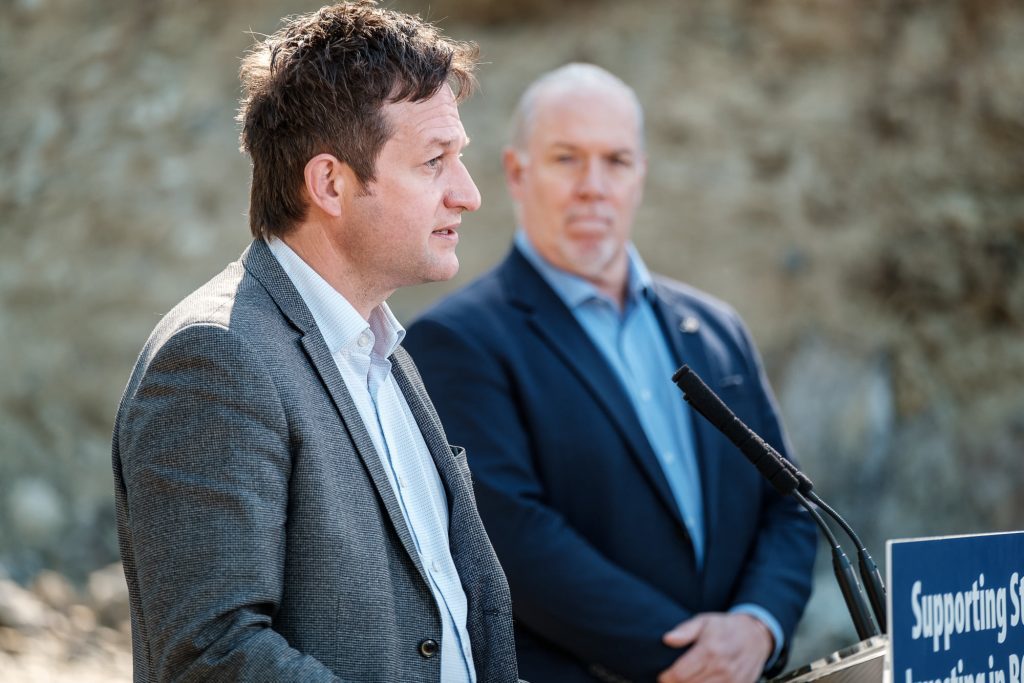
In the next day or two, Public Safety Minister and Solicitor General Mike Farnworth is expected to announce much tougher enforcement measures based on the orders already put in place by the Provincial Health Officer.
Meanwhile, the Minister of Education Rob Fleming says his ministry is “working with education partners to find creative solutions to support student choice while keeping students connected to their community school”. Social cohesion is important as part of what public education provides in society, but in these extraordinary times the government’s delivery of both education and their flavour of social cohesion may need to be provided for in a much different manner.
BC Teachers want safety and smart planning:
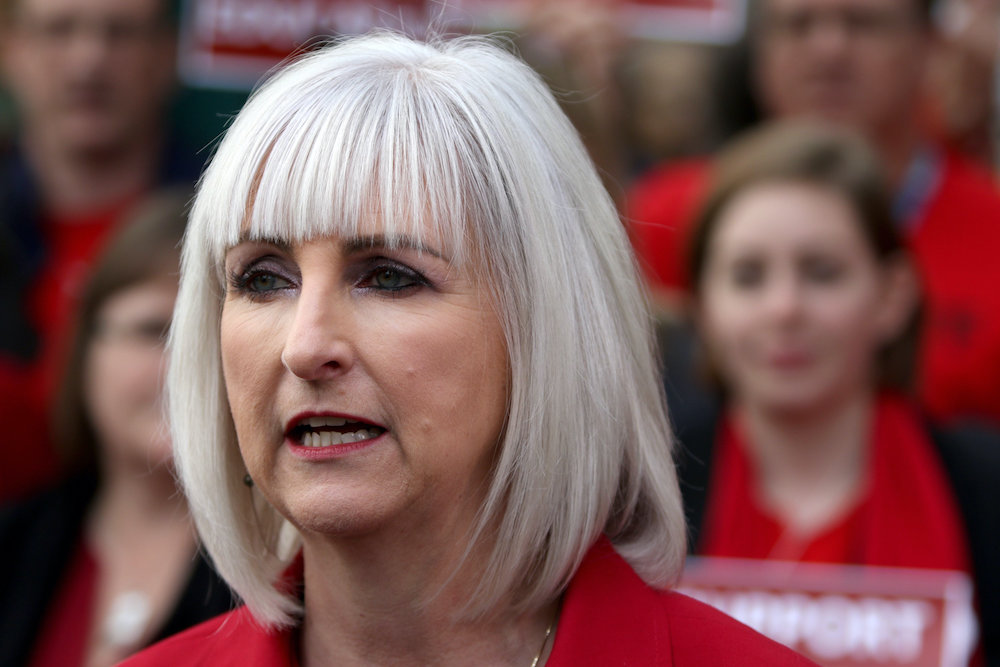
The BC Teachers Federation (BCTF) has been asking for smaller class sizes this fall during the pandemic, and better hygiene and sanitation measures in schools. As well, they feel that remote learning should be properly established as a fully available method of curriculum delivery so that returning to the classroom is not essential even outside of any identified outbreaks.
BCTF President Teri Mooring has been addressing media about these concerns quite a lot in recent days.
Teachers are concerned about their own safety (and taking any exposure of COVID back to their families) as well as that of their students. And given the stress of delivering education under such complex and ritualized procedures as will be required this fall in BC schools under the present plan, how much learning will really be accomplished?
No one disagrees that educating children is the most significant public service that can be delivered to citizens of the province. But perhaps it’s time to recognize that a pandemic (without a vaccine available for at least another year, by all accounts) trumps any attempt for the ‘normal’ delivery of education.
To be sure, there is a tremendous investment in schools in all their facets — buildings and all the infrastructure, staff and their careers, students and their full lives ahead of them, etc. But the pandemic is asking everyone to put down their swords from the normal course of things and do things differently — for everyone’s protection.
Revisiting education during a pandemic:
No one wants to impede the education of children. But do we want to endanger what could be the lifelong (or shortened life) well being of everyone in the attempt to make sure their education takes place within brick-and-mortar buildings?
If the Ministry of Education is already looking at plans to provide remote learning but the packaging of that is not ready yet, perhaps it’s time to ask all stakeholders — including parents and families — to get on board with a unique pause in the action. In other words, not send kids and teachers back into close contact in schools this fall, even if fully true-to-the-curriculum learning isn’t ready in a remote format. Maybe everyone needs to agree to write off any normalcy in September to December 2020 for the sake of safety and potentially lifelong impacts. And not just a ‘let’s be cautious’ sort of safety, but the sort of sensibility one exercises by deciding not to jump off a cliff.
Big decision, big impacts:
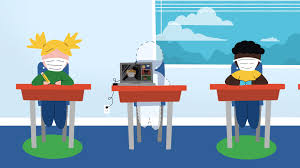
Yes, pulling back out of mandatory in-class learning (while remote and hybrid learning programs are developed and made fully available) means economic impacts on families where one or both parents cannot therefore return to work.
Yes, this means the likely retardation of coursework or goals for university that older students have in place.
Yes, this means more schooling at home responsibilities for parents who are already overloaded with multiple stressors.
And yes, this means that some younger children and those with ‘learning vulnerabilities’ will probably fall behind.
And yes it means that some businesses and employers will have sketchy availability to employees and workers when making a go of their business is already tough.
But is all of that not the lesser of two evils, where the other option is consciously and deliberately placing everyone onto the front firing line of a remorseless virus? The psychological trauma of knowing you are agreeing to submission of one’s self or one’s own children into an unsafe public space goes counter to all common sense based on public health’s very own guidelines. It’s not something that should not be asked of students and families, and not of teachers either.
Yesterday on Twitter, BCTF President Teri Mooring posted the BCTF’s continued concerns that despite the government and health officials having done “excellent work on enhancing contact tracing strategies”, that their members “are rightly concerned that not enough has been done on preventing the transmission of the virus in schools”.
Teacher input catches public attention:
Arguably, teachers — by the training of their profession and trade — are among the best equipped in terms of thought process and analysis to detect flaws, and one hopes among the most articulate to express them in a constructive manner.
Mooring has been articulate and methodical in her delivery of the concern of BCTF members in recent weeks. She told Island Social Trends last week that planning needs to be in place for remote and hybrid learning. Not as some eventuality for the future, but soon.
Stages of response during a pandemic:
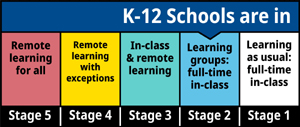
The Ministry of Education already has a five-stage pandemic response to education in place. Stage 2 (mandatory in-school attendance, with teachers and students in learning groups) is presently in place for a September 2020 restart.
Teachers are to return on September 8 immediately after the Labour Day long weekend, and students are to then arrive back to class for orientation to the new COVID in-school realities on September 10 and 11.
All of that week will be spent learning, addressing, and adapting to the health protocols that everyone seems to be trying their best to deal with.
Formulating a solid remote learning process:
Mooring wants the steering committee of teachers, principals and vice principals, school districts and ministry reps to remain in place this fall, after working this summer on plans for the restart. One of the most important reasons is to get rolling on a viable method of remote learning.
It was “emergency remote learning” for the entire spring, says Mooring, referring to how teachers only learned during the spring break in March that students would not be returning to class in April. Teachers had about a week after spring break — at the start of April — to devise a way to contact all of their students, develop learning modules or processes, get parents and students organized with remote technologies, and not only deliver curriculum in some manner or another but to followup on student and parents inquiries along the way.
“It all happened very quickly, certainly not in a way that we had the opportunity to do careful planning. It was in a rushed manner, and teachers did the best that they could,” the BCTF president told Island Social Trends last week.
Mooring further explained that the Ministry’s experiment in June “when we saw a partial return with teaching in class four days per week and supporting the rest of students learning remotely” that the hybrid model (some learning at home and others in the classroom) was “unsustainable”.
“Teachers were doing two jobs. It took many hours (over and above the regular work load) because the majority of students didn’t return — 35% were in class and 65% didn’t return. There was a small amount of time to support them in remote learning,” said Mooring.
Hybrid learning can be sustainable:
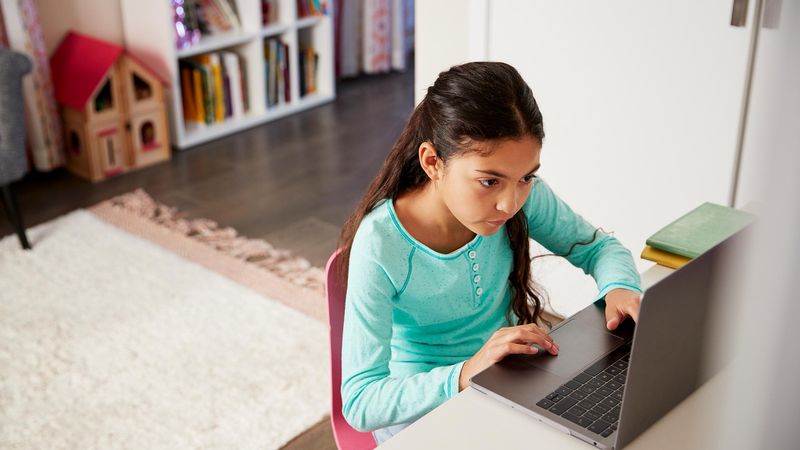
“There may be a need to engage in hybrid learning in the fall or during the school year at some point,” says Mooring. More importantly: “There is a way to make that sustainable, it just wasn’t planned (before). Now we have some time.”
She proposes that even with government presently mandating a full return, that “eventually we may be in another stage, back to hybrid or blended learning, but in a sustainable way.”
“Even in Stage 2 with full return, secondary schools are still having the hybrid experience,” she says. That’s based on the Ministry’s directive that high school classes be no larger than about 22 students. “The larger schools in particular will have a difficult time organizing themselves around the cohort model”.
Class sizes in BC:
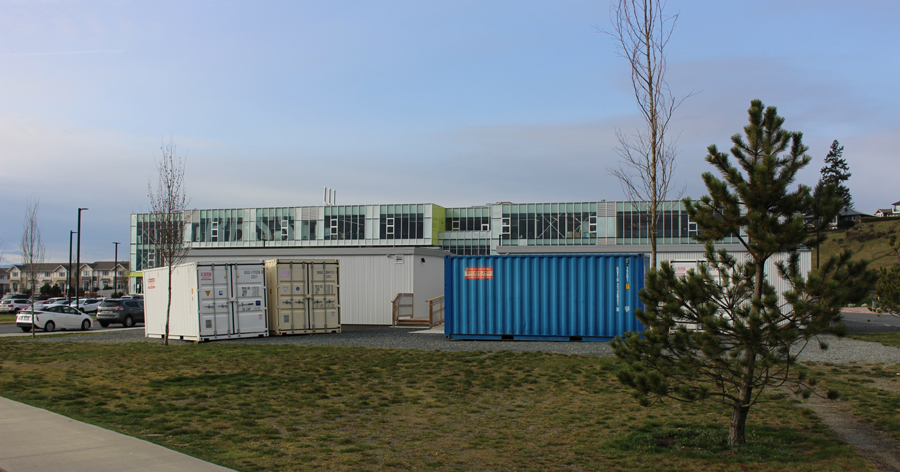
“BC has made record investments in education that has resulted in average class sizes that are the smallest in a generation – with more educators and other supports in the classroom,” it was stated by the Ministry of Education on Wednesday. Class size averages in B.C. are given as follows:
- 18 students for kindergarten (cap is 20)
- 19.5 students for grades 1 to 3 (cap is 22)
- 23.3 students for grades 4 to 7 (cap varies)
- 22.4 students for grades 8 to 12 (cap varies)
Education Ministry is aware of BCTF concerns:
Education Minister Rob Fleming yesterday provided his comments on these matters in a statement to Island Social Trends.
“I know the global pandemic is unpredictable and families and teachers have specific concerns and circumstances. We are aware of the issues raised by the BCTF, and a number of these have been addressed through our working groups,” said Fleming
“We will continue to work with teachers, parents, support staff and education partners on the steering committee on the safe restart plan,” the Education Minister said.
Education Ministry guidelines (following public health guidelines) are offered over to school districts:
School districts are charged with adapting the Provincial Health Officer’s orders and guidelines into practical application in their schools. School districts seem keen and up to the task, appreciating the flexibility to suit the public health requirements to local situations.
Flexibility is available to the 60 school districts in the province. “Government’s restart plan enables districts to deliver schooling within the BCCDC’s comprehensive health and safety requirements,” says Fleming.
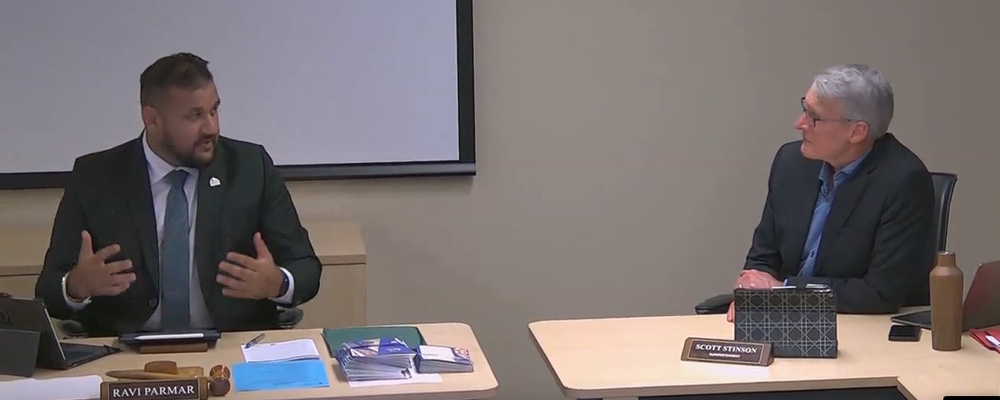
To begin with, the adjustment of the first week back in September to being one of orientation seemed a welcome idea. “It provides a bit of flexibility to gradually return to school, which is helpful,” said Board Chair for the Sooke School District (SD62), Ravi Parmar, last week.
Teachers are also on board. Starting with the public health guidelines: “We have full respect for Dr Bonnie Henry,” says Mooring. “She has been doing a phenomenal job in BC. Her approach of calm and carefully outlining has been very laudable. BC is doing very well,” the BCTF president said last week.
Mooring says the Ministry of Education and working groups are taking that health plan (as made available in July) and have been translating into the education setting.
Fleming outlined that there are 25 teachers contributing to working groups that are “hard at work creating detailed operational guidelines to support school districts with their restart plans”. He added: “The health and safety of teachers, students and staff is our top priority.”
Enhanced cleaning & more PPE:

To support the safe return of students and staff, the Province is providing an additional $45.6 million to school districts for enhanced cleaning (including door knobs, desks, keyboards and chairs), hand-washing stations, re-usable masks and other supplies they’ll need. Fleming highlights the purchase of 1.5 million masks – two for each staff and student in each public school.
A donation of 54,500 face shields has been received from Canadian Shield, which will be provided to schools as well.
Beyond the PPE:
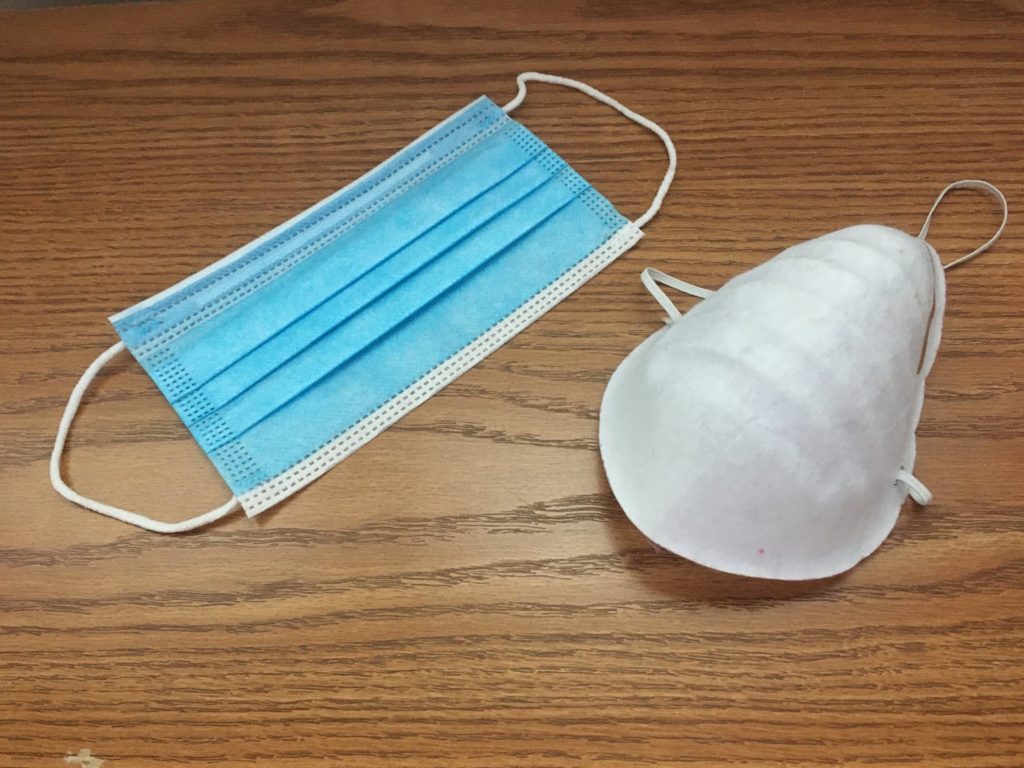
In highlighting the personal protective equipment (PPE) there is an obedience to public health orders and science, which of course has been necessary as the lead for directions during an infectious pandemic. But somehow there seems a continued reluctance to budge on the sensibilities of returning students to classrooms — to get past the science and take a policy lead for the whole of people and families.
A metaphorical parallel might be that soldiers are equipped with guns and helmets but are being sent into an active war zone against an enemy that is infinitely more powerful by being insidious and unseen. There really is no fireproof match for COVID-19 without an effective treatment or vaccine, as Dr Henry and Health Minister Adrian Dix have said many times.
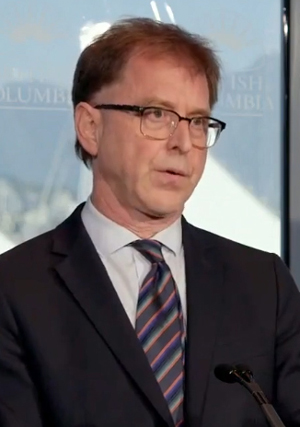
Public health officials admit that COVID-19 outbreaks will occur in schools this fall. Which classroom will that be? Which children and families will be the real people behind the test-positive case statistics?
While education is of course mandated in the BC School Act, and the Horgan NDP government has a fundamental plank about equality and equal opportunity — particularly when it comes to education — again these are times when it’s important to see the writing on the wall.
Sending kids and teachers into closed, people-filled spaces (no matter how well organized) at the start of what is expected to be the second wave of the COVID pandemic is surely a case of blind obedience to belief over sensible response to reality.
Orientation week allows for adjustment:
Fleming says his education ministry has already been flexible and making adjustments. In particular, that the initial “everyone goes back to school on September 8” has been adapted into an orientation week (four days after Labour Day weekend, i.e. September 8 to 11) is “to ensure a safe, ready and welcome restart”.
The restart in that manner “will help students, teachers and staff adjust to their new routines, find out about their learning groups, and practice safety protocols”. That’s currently the plan. Fleming has indicated throughout the summer that adaptation is going to be normal (and should be expected) as response to the pandemic continues.
Parents on the outside looking in:

While parental input has been received if not welcomed by school districts — as encouraged a few weeks ago by the Provincial Health Officer — parents and families at home really are on the outside looking in.
Other than through parent reps who may or may not be taking part in the working groups at the provincial level, and otherwise sending individual comments to school district offices, it’s really only through public pressure that parents can make any sort of difference. The pressure is on. There’s been an online petition, and news media have been cataloging parental concerns for weeks now.
In actual fact, under the current public health guidelines, parents won’t be allowed to enter any schools during the pandemic, but must drop off their kids outside the school. A stark reminder of the boundaries.
The petition started by a parent in the Vancouver area with now about 35,000 signatures was presented in the BC Legislature last week, and continues to gain momentum. Citing that the restart plan goes against the main premise of COVID protections (such as physical distancing and not spending long periods of time in close proximity to other people), the petition calls for optional attendance in schools this fall and the availability of comprehensive remote learning.
Easing out of this gracefully:
Minister Fleming must certainly know that all it will take is the first few outbreaks of COVID in one or more schools to set on fire a retreat from schools by students who will sensibly and therefore rightfully be kept home by parents.
In so knowing, he is probably guiding or at least hoping that the multi-stakeholder working group is developing a plan for a comprehensive remote learning system and hybrid options for scenarios where the children of essential workers will still be in classrooms.
No matter what the perceived obstacles to that, remote learning (with a hybrid component) really remains the only stable solution for providing a continued process of education to young people in BC during the continuing pandemic. It will also contribute to protecting teachers from endangering themselves and their own families.
The 2020-2021 academic year may be transitional, and in some aspects will produce losses in education for some or many students. But if they remain safe and uninfected by COVID during this deep early phase of the pandemic, who can argue with that tradeoff?
If the 2020-2021 academic year becomes sacrificial so that a remote learning and/or hybrid learning model becomes developed as a solid plank of Ministry of Education offerings now and going forward, is that not the only reasonable and necessary outcome?
COVID is the master:

There’s really no sense in trying to muscle against this entire scenario, as in trying to pretend that the school year can be as close to normal as we can imagine.
This school year won’t be normal, and at this moment it appears to be highly unsafe in many unwise ways. COVID is the master.
Parents can only hope that the Ministry ‘cries uncle’ on this one, declaring COVID the winner in this round. For everyone’s benefit. Public education is absolutely fundamental to an informed, skilled and responsive society. But what a sad society we will have in BC if we lose children and teachers to the mighty novel coronavirus in the name of getting kids back into school buildings no matter what.
Willing to wait for hybrid:
The Ministry may find itself pleasantly surprised to learn that parents would rather sacrifice a bit more economic uncertainty and deal with all the complications of a lot more learning from home for their children, if they know that a solid remote and hybrid learning package is being developed over the next few months. That seems so much more humane than experimenting with people’s safety — children, teachers, and everyone’s families at home — for the sake of matching up with public health protocols, no matter how well intended or how good they look on paper.
It’s pretty much now time to drop all the posturing, pretenses and hopeful desires for driving education forward in the midst of a second COVID wave approaching. In following the wise approach of ‘retreating to fight another day’… a fall semester without mandatory in-class learning while educators and administrators get busy with developing a solid hybrid and remote learning system will — in the not too distant future — be the solution that satisfies all.
Then — if we’ve done our best, as in providing the options that are safest for everyone — and there are still outbreaks and families affected, at least the Ministry can say (and families and teachers can know) that the safest approach was sought and delivered. Then come what may.
One more metaphor to support a big shift:
Here’s one more framework by which to get your head around why it’s important to ‘abandon all hope’ for maintaining anything close to normal for BC public education in the September to December phase of the pandemic in 2020.

Parents with more than one child will identify with this:
When you have your first child, there are adjustments, and many new parents manage a valiant effort to maintain aspects of their pre-parenting life as it was. Then along comes child number two and parents are into new territory. It’s sometimes amusing to watch the struggle, but eventually the reality sinks in … that life for the adults will not ever be the same as it was pre-parenting. Children rule the roost (by virtue of raising them responsibly) … they force changes in our schedules, financial demands, and interactions with society.
COVID is that like those new kids who change your life forever. COVID declares the new direction. Adaptation to a brand new reality is the key, while holding true to principles.
Politics trumps public health:
As Premier John Horgan said about two weeks ago, the province and its ministries will follow public health advice, but that ultimately it’s the politicians who decide how the province will operate during the pandemic. The dance between public health and politicians will soon take a pause. It will take political courage to declare a truce against COVID and cancel mandatory in-classroom education.
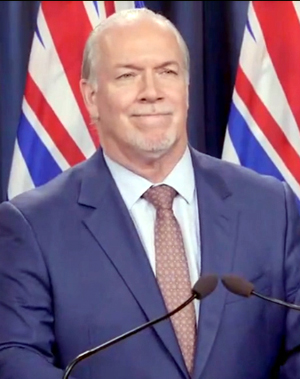
Horgan has propped up the public health system with the needed army of contact tracers (500 new temporary positions for this fall and winter), but let’s hope that’s not just the fatalistic end point of preparation for outbreaks that can be potentially avoided.
Few will be able to argue the sensibility of avoiding the health risks of packing classrooms full of people when there is no COVID vaccine and a second wave approaches amidst what is already influenza season nearly upon us. It will be a tough call for the Premier and his cabinet, but one which would ultimately be met with relief by all stakeholders (teachers, school districts, parents, students and even the politicians) at this point in the pandemic, despite all the contractual obligations around education delivery and the many expectations of hopeful futures that are held by youth.
With a solid remote learning system in place, there will be a safe landing pad for students and families if and when it becomes necessary to cancel mandatory in-class learning during the 2020-2021 academic year. Afterall, this intelligent responsiveness that might look at first to be a reckless retreat, will be ‘not forever, but for now’.

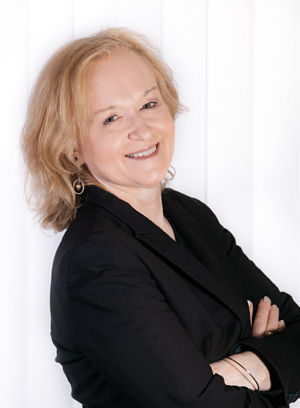
===== About the writer: Mary P Brooke, B.Sc., Cert PR, is the editor and publisher of a series of local news publications that have covered local issues from a sociological perspective on the west shore and south Vancouver Island region since 2008. Now with Island Social Trends (until recently West Shore Voice News), Ms Brooke explores the breadth and depth of socioeconomic and lifestyle issues that impact the broadest range of citizens in the region amidst the ethos of what it means to be a British Columbian and a Canadian. Mary is the mother of four grown children who now make their careers in a range of professional and creative occupations. The importance of education and contribution to community have been core to Ms Brooke’s adult life and career. As a journalist she has covered education politics up close in the west shore area since 2014. Her company Brookeline Publishing House Inc has been active in various business sectors of the Greater Victoria region since 1995.


